
DOC023.97.80570
9525sc Degas System
08/2019, Edition 5
User Manual
Bedienungsanleitung
Manuel de l’utilisateur
Manual del usuario
Manuale utente
Brugervejledning
Instrukcja obsługi
Kullanıcı Kılavuzu
Návod na použitie
Εγχειρίδιο χρήσης

Table of Contents
English..............................................................................................................................3
Deutsch.......................................................................................................................... 30
Français......................................................................................................................... 60
Español.......................................................................................................................... 90
Italiano.......................................................................................................................... 119
Dansk............................................................................................................................148
Polski............................................................................................................................ 175
Türkçe...........................................................................................................................204
Slovenský jazyk......................................................................................................... 232
Ελληνικά...................................................................................................................... 262
2

Section 1 Table of contents
Specifications on page 3
General information on page 4
Installation on page 8
Startup on page 14
Operation on page 16
Maintenance on page 19
Troubleshooting on page 28
Replacement parts and accessories on page 28
Section 2 Specifications
Specifications are subject to change without notice.
Specification Details
Dimensions, 9525 Degas System (W x H x D) 559 x 813 x 305 mm (22 x 32 x 12 in.)
Dimensions, 9525 DCCP System (W x H x D) (Optional) 826 x 813 x 241 mm (32.5 x 32 x 9.5 in.)
Weight 36 kg (80 lb)
Power requirements US: 110 to 120 VAC, 1 phase, 50/60 Hz
EU: 220 to 240 VAC, 1 phase, 50/60 Hz
Main supply voltage fluctuation ±10% of nominal voltage
Power consumption 1.6 kVA
Pollution Degree 2
Installation Category II
Altitude Requirements Standard 2000 m (6,562 ft.)
Recommended operating temperature 23 to 27 °C (75 to 80 °F)
Ambient temperature range 2 to 50 °C (36 to 122 °F)
Storage temperature 0 to 49 °C (32 to 120 °F)
Relative humidity 0% to 85% RH
8315 Conductivity sensor Cell constant, k: 0.01 cm
-1
Measuring range: 0.01 to 200 μS/cm
Sensor accuracy: <2%
sc200/9500 Controller power requirements 100 to 240 VAC ±10%, 50/60 Hz
Controller enclosure rating IP66/NEMA 4X
Sample flow 100 to 150 mL/min; 6 to 9 L/hr (1.5 to 2.4 gph)
Sample inlet/outlet connections 1/4 in. tube fitting
Cooling water consumption 3.8 to 11.4 L/min (1 to 3 gpm)
Degas system certifications CE, UL, CSA
English 3

Section 3 General information
In no event will the manufacturer be liable for direct, indirect, special, incidental or consequential
damages resulting from any defect or omission in this manual. The manufacturer reserves the right to
make changes in this manual and the products it describes at any time, without notice or obligation.
Revised editions are found on the manufacturer’s website.
3.1 Safety information
N O T I C E
The manufacturer is not responsible for any damages due to misapplication or misuse of this product including,
without limitation, direct, incidental and consequential damages, and disclaims such damages to the full extent
permitted under applicable law. The user is solely responsible to identify critical application risks and install
appropriate mechanisms to protect processes during a possible equipment malfunction.
Please read this entire manual before unpacking, setting up or operating this equipment. Pay
attention to all danger and caution statements. Failure to do so could result in serious injury to the
operator or damage to the equipment.
Make sure that the protection provided by this equipment is not impaired. Do not use or install this
equipment in any manner other than that specified in this manual.
3.1.1 Use of hazard information
D A N G E R
Indicates a potentially or imminently hazardous situation which, if not avoided, will result in death or serious injury.
W A R N I N G
Indicates a potentially or imminently hazardous situation which, if not avoided, could result in death or serious
injury.
C A U T I O N
Indicates a potentially hazardous situation that may result in minor or moderate injury.
N O T I C E
Indicates a situation which, if not avoided, may cause damage to the instrument. Information that requires special
emphasis.
3.1.2 Precautionary labels
Read all labels and tags attached to the instrument. Personal injury or damage to the instrument
could occur if not observed. A symbol on the instrument is referenced in the manual with a
precautionary statement.
Electrical equipment marked with this symbol may not be disposed of in European domestic or public
disposal systems. Return old or end-of-life equipment to the manufacturer for disposal at no charge to
the user.
This symbol, if noted on the instrument, references the instruction manual for operation and/or safety
information.
This symbol indicates that a risk of electrical shock and/or electrocution exists.
This symbol indicates the need for protective eye wear.
4 English

This symbol indicates that the marked item can be hot and should not be touched without care.
This symbol, when noted on the product, identifies the location of a fuse or current limiting device.
3.1.3 Certification
C A U T I O N
This equipment is not intended for use in residential environments and may not provide adequate protection to
radio reception in such environments.
Canadian Radio Interference-Causing Equipment Regulation, IECS-003, Class A:
Supporting test records reside with the manufacturer.
This Class A digital apparatus meets all requirements of the Canadian Interference-Causing
Equipment Regulations.
Cet appareil numérique de classe A répond à toutes les exigences de la réglementation canadienne
sur les équipements provoquant des interférences.
FCC Part 15, Class "A" Limits
Supporting test records reside with the manufacturer. The device complies with Part 15 of the FCC
Rules. Operation is subject to the following conditions:
1. The equipment may not cause harmful interference.
2. The equipment must accept any interference received, including interference that may cause
undesired operation.
Changes or modifications to this equipment not expressly approved by the party responsible for
compliance could void the user's authority to operate the equipment. This equipment has been tested
and found to comply with the limits for a Class A digital device, pursuant to Part 15 of the FCC rules.
These limits are designed to provide reasonable protection against harmful interference when the
equipment is operated in a commercial environment. This equipment generates, uses and can
radiate radio frequency energy and, if not installed and used in accordance with the instruction
manual, may cause harmful interference to radio communications. Operation of this equipment in a
residential area is likely to cause harmful interference, in which case the user will be required to
correct the interference at their expense. The following techniques can be used to reduce
interference problems:
1. Disconnect the equipment from its power source to verify that it is or is not the source of the
interference.
2. If the equipment is connected to the same outlet as the device experiencing interference, connect
the equipment to a different outlet.
3. Move the equipment away from the device receiving the interference.
4. Reposition the receiving antenna for the device receiving the interference.
5. Try combinations of the above.
3.2 Product overview
The 9525sc degas system removes CO
2
and measures degassed conductivity from the sample
stream. The 9525sc degas system boils the sample and distills the liquid through the crossover
system to remove CO
2
gas from the sample stream. The unit removes CO
2
gas through the steam
vent, and distills the flow through the sample cooler. The unit then measures the conductivity of the
sample.
Use the 9523sc cation conductivity panel to measure specific, cation and degassed conductivity. The
combined system is known as the 9525sc degas cation conductivity (DCCP) system. Refer to
English
5

Figure 1. Refer to the 9523sc user instructions to add the 9523sc cation conductivity panel to the
degas system.
Figure 1 Product overview
1 Temperature controller power switch 7 Sample cooler
2 Power indicator light 8 Heater
3 Degas (boiler) condenser 9 Heat shield
4 Hach sc200 or Polymetron 9500 controller 10 Temperature Controller
5 8315 conductivity sensor 11 Electrical enclosure
6 Flow chamber
3.3 Product components
Make sure that all components have been received. Refer to Figure 2. If any items are missing or
damaged, contact the manufacturer or a sales representative immediately.
6
English

Figure 3 Customer-supplied parts
1 Sample plumbing parts 7 3/8 in. NPT tube fittings (x2)
2 Needle valve/rotameter 8 Tubing (align the size of the inlet/outlet fittings)
3 Tubing 9 Electrical parts
4 Shutoff valve 10 Electrical cable, 3.31 mm
2
(12 AWG) (US)
5 Cooling water plumbing parts 11 Electrical cable, 2.08 mm
2
(14 AWG) (EU)
6 Shutoff valves (x2)
Section 4 Installation
D A N G E R
Multiple hazards. Only qualified personnel must conduct the tasks described in this section of the
document.
4.1 Mechanical installation
W A R N I N G
Personal injury hazard. Instruments or components are heavy. Use assistance to install or move.
Select an installation location. Most panels are installed on a metal framing system or equivalent
mounting structures. Before installation, examine the location. The location must have the items that
follow:
• Sufficient structural integrity in the floor and wall
• A sufficient anchor location
• Sufficient operation and maintenance space. Refer to Figure 4
• Cooling water available
• Access to a floor drain
• A flat installation surface at the correct height
• Sufficient space above the unit to prevent condensation above the steam vent
• Sufficient light for operation and maintenance
For optimum equipment installation, the location must have the properties that follow:
• No mechanical vibration
8
English

• No media that can cause corrosion
• No strong heat radiation
• An ambient temperature near 23 to 27 °C (73 to 80 °F) with minimal variation
Use sufficient support to keep gravity and thermal loads on the connections and vibration to a
minimum. Refer to Figure 4.
Figure 4 Mounting dimensions
4.2 Electrical installation
D A N G E R
Electrocution hazard. Always remove power to the instrument before making electrical connections.
Supply power to the instrument with conduit or a power cable. Make sure that a circuit breaker with
sufficient current capacity is installed in the power line. The circuit breaker size is based on the wire
gauge used for installation.
For installation with conduit:
• Install a local disconnect for the instrument within 3 m (10 ft) of the instrument. Put a label on the
disconnect that identifies it as the main disconnect device for the instrument.
English
9

• Make sure that the power and safety ground service drops for the instrument are a minimum of
3.31 mm
2
(12 AWG) (for 110 V) and a minimum of 2.08 mm
2
(14 AWG) (for 220 V) and the wire
insulation is rated for 300 VAC or higher and 60 °C (140 °F) minimum.
• Connect equipment in accordance with local, state or national electrical codes.
• Connect the conduit through a conduit hub that holds the conduit securely and seals the enclosure
when tightened.
• If metal conduit is used, make sure that the conduit hub is tightened so that the conduit hub
connects the metal conduit to safety ground.
For installation with a power cable, make sure that the power cable is:
• Less than 3 m (10 ft) in length
• Rated sufficient for the supply voltage and current
• Rated for a minimum of 60 °C (140 °F) and applicable to the installation environment
• Not less than 3.31 mm
2
(12 AWG) with applicable insulation colors for local code requirements
• A power cable with a three-prong plug (with ground connection) that is applicable to the supply
connection
• Connected through a PG11 or 3/4 inch cable gland (strain relief) that holds the power cable
securely and seals the enclosure when tightened
• Does not have a locking type device on the plug
• Near to the instrument with easy access by personnel
Table 1 Wiring information—AC power
Terminal Description Color—North America Color—EU
L Hot or phase (L) Black Brown
N Neutral (N) White Blue
G Protective earth ground
(G)
Green Yellow with green stripe
Connect conduit or a power cord
Connect the controller to power with conduit or a power cord. Make connections at the same
terminals, regardless of the type of wire used. Refer to Table 1 to connect conduit or a power cord.
Put each wire into the applicable terminal until the insulation is flush against the connector with no
bare wire seen. Pull lightly after insertion to make sure that there is a tight connection. Refer to
Figure 5.
1. Loosen the four captive screws.
2. Carefully open the electrical cover.
3. Use a knockout punch driver to punch a hole in the top of the NEMA electrical enclosure.
4. Attach a power cord strain relief connector to the hole.
5. Attach the power cord to the strain relief connector.
6. Connect the live (L), neutral (N), and ground (G) wires as shown in Figure 5.
7. Close the electrical cover.
8. Tighten the screws.
10
English

Figure 5 Connect electrical wiring
4.3 Plumbing
4.3.1 Connect the plumbing
Note: Clean and deburr all of the connecting pipe and tubing before installing.
4.3.2 Connect the cooling water
Note: Adjust the cooling water flow at the cooler outlet.
The cooling water must have the properties that follow:
• An approximate flow rate of 3.78 liters/minute (1 gallon/minute)
English
11

• An approximate temperature of 25 °C (77 °F)
• Clean with no suspended solids and a low hardness
• Low in chlorides because chlorides can cause corrosion in the stainless steel coil and shell
Connect the cooling water as follows:
1. Use a 3/8-inch NPT (national pipe thread) connection to connect the tubing to the cooling water
outlet at the top of the cooler. Refer to Figure 6. Make sure that the outlet drains into a floor drain.
2. Use a 3/8-inch NPT connection to connect tubing to the cooling water inlet at the bottom of the
cooler. As an alternative, connect the tubing to the cooling water inlet at the top of the cooler.
Figure 6 Cooling water plumbing
1 Cooling water inlet (alternative) 3 Shutoff valve
2 Cooling water outlet 4 Cooling water inlet
4.3.3 Connect the sample lines
W A R N I N G
Burn hazard. Obey safe handling protocols during contact with steam.
Make sure that the samples supplied to the instrument are at a temperature of 25 °C ± 1 °C (77 °F ±
2 °F). Make sure the pressure is controlled by a back pressure regulator or a head cup to keep a
constant sample flow rate.
Install the needle valve/rotameter on the sample inlet before the degas unit. If the 9523sc cation
conductivity panel is used, install the needle valve/rotameter on the sample inlet before the cation
conductivity panel.
Install the flow cells in an orientation that keeps the water level near the crossover section of the
degas chamber. The sample outlet from the panel must be level with the crossover section of the
degas chamber.
Incorrect release of steam from the degas chamber or incorrect flow cell locations can have an
unwanted effect on the performance of the system.
12
English

Complete the steps that follow to connect the sample line. Refer to Figure 7.
1. Use a 1/4-inch NPT connection to connect the sample line to the sample inlet.
2. Use a 1/4-inch NPT connection to connect the sample outlet line to the sample outlet. The outlet
must drain into a floor drain.
3. Unroll the condensate drain tube.
4. Push the condensate drain tube through the hole in the rear of the unit. Make sure that the outlet
drains into a floor drain.
5. Remove the red cap from the steam vent.
6. Remove the red cap from the vacuum break.
7. Make sure that the tubing does not touch the hot surfaces.
English 13

Figure 7 Sample line plumbing
1 Sample inlet 5 Condensate drain tube
2 Shutoff valve 6 Steam vent
3 Needle valve/rotameter 7 Vacuum break
4 Crossover section 8 Sample outlet
Section 5 Startup
W A R N I N G
Burn hazard. The heater surface and surrounding area gets hot. Do not touch.
W A R N I N G
Burn hazard. Obey safe handling protocols during contact with hot liquids.
14 English

Notes:
• The power indicator light will start and stop with the heater.
• For units installed in a small shelter or prefabricated structure, it is recommended that the steam
vent is pointed to the outer side of the structure.
The heater temperature is factory-programmed at 108 °C (226 °F) at the factory and the sample flow
rate must be between 100 and 150 ml/minute (6 and 9 L/hr). Decrease the flow rate if there is no
vapor at the steam vent. Droplets of hot boiling water at the steam vent shows that the distilled water
is too hot. If the distilled water becomes too hot, decrease the set temperature or increase the flow
rate within the specified range.
Refer to Figure 9 on page 16.
1. Set the water flow to the cooler to on.
2. Examine cooler for leaks at the two cooler inlets and the outlet.
3. Examine the outlet tube for correct drainage.
4. Set the sample flow to on.
5. Adjust the sample flow to 100 to 150 ml/minute.
6. Look for leaks and for correct drainage.
7. Set the temperature controller power switch to on. Refer to Figure 8. The power light comes on.
8. Make sure that the display on the controller is on.
9. Monitor the temperature controller. The temperature will increase continuously to approximately
106 °C.
Note: The temperature controller may not reach 106 °C, based on local air pressure and
temperature. The heater will heat the sample to the boiling point of water. If there is a constant
column of water vapor from the steam vent, the unit is operating correctly.
Figure 8 Set the temperature controller to on
English 15

Section 6 Operation
6.1 User interface—Temperature controller
Figure 9 Temperature controller
1 Left display 5 Up arrow key
2 Output activity 6 Infinity key
3 Right display 7 Advance key
4 Down arrow key
When flow to the unit is stopped, the heater will become too hot. An alarm prevents the heater
operation until the user restores flow and stops the alarm on the controller. Push to enter the
alarm acknowledgement mode. Use and to scroll through the alarm responses. Select "CLr"
to stop the alarm.
6.1.1 Configure the heater alarm
Set the flow through the unit to a range of 100 to 150 ml/minute (6 to 9 L/hr) to make sure that the
heater stays filled with water. Set the flow before power is applied to the unit to prevent damage to
the heater. If cooling water is not supplied to the instrument, remove all cells downstream of the
heater and flow cells. For a description of the temperature controller, refer to Table 2.
By default, the temperature meter is set to show the actual temperature on the left display and the
maximum temperature on the right display. Do not change the factory-set defaults. Refer to the
Watlow EZ-ZONE PM Express User's Guide (available online) for all of the user instructions.
16
English

Table 2 Temperature controller
Display/Key Name Description
Left display Shows the actual temperature.
In the Operations or Setup menu,
shows the process value or set
point data.
1 2
Output 1 and Output 2, and Right
display
Output 1 and 2 shows which output
is set to on.
Right display shows the maximum
temperature. In the Operations or
Setup menu, shows the menu
display.
Up/Down arrow keys Selects new data when Advance
key is pushed.
Moves forward or backward through
software menus and parameters.
Starts and stops the timer.
Infinity key Stops alarms.
Push to back up one level.
Push and hold for two seconds to
go back to the Operations menu.
Advance key Moves forward through parameter
prompts.
6.1.2 Configure the control mode
Push to scroll through the options on the Operations menu. Push to go back to the default
display. For a description of the Operation menu options, refer to Table 3.
To navigate the Operations menu, follow these steps:
1. Push to select a menu.
2. Push or to find an option.
3. Push to select the option.
4. Push and hold for two seconds to go back to the default display.
Table 3 Operations menu options
Menu option Name Description
C.M1
Control mode Shows the current control mode:
Off, Auto or Manual.
h.Pr1
Heat power Shows the current heat output level.
English 17

Table 3 Operations menu options (continued)
Menu option Name Description
Aut1
Autotune Shows the current status of
Autotune: No or Yes.
idS1
Idle set point Configures a set point that can be
triggered by an event state.
6.1.3 Configure the setup mode
Push to scroll through the options on the Setup menu. Anywhere in the Setup menu, push and
hold for two seconds to go back to the default display. For a description of the Setup menu
options, refer to Table 4.
To navigate the Setup menu, follow these steps:
1. Push and hold or to show the Setup menu.
2. Push to select a menu.
3. Push and hold for two seconds to go back to the default display.
Table 4 Setup menu options
Menu option Name Description
oPEr
Operations Navigates to the operations menu.
Ain
Analog input value Shows the process value.
i.Er
Input error latching Sets error latching to on or off. If latching is on, the user must
manually clear the errors.
i.CA
Calibration offset Offsets the input indication to adjust for lead wire resistance or
other factors that cause the input indication to change from the
actual process value.
18 English

Section 7 Maintenance
7.1 Prepare for storage
C A U T I O N
Burn hazard. Turn off power and allow the instrument to cool before this procedure.
D A N G E R
Electrocution hazard. Remove power from the instrument before doing maintenance or service
activities.
To prepare for storage or set the system to off, refer to Figure 10.
1. Set the heater to off.
2. Remove power from the heater.
3. Close the sample inlet valve to stop the sample flow.
4. Close the cooling water inlet valve to stop the water flow to the cooler.
5. Close the cooling water outlet isolation valve.
Figure 10 Set the system to off
English 19

7.2 Open the electrical enclosure
D A N G E R
Electrocution hazard. Remove power from the instrument before doing maintenance or service
activities.
To open the electrical enclosure, refer to Figure 11:
1. Loosen the four captive screws on the electrical enclosure.
2. Carefully open the electrical cover.
Figure 11 Open electrical enclosure
20 English
Sayfa yükleniyor...
Sayfa yükleniyor...
Sayfa yükleniyor...
Sayfa yükleniyor...
Sayfa yükleniyor...
Sayfa yükleniyor...
Sayfa yükleniyor...
Sayfa yükleniyor...
Sayfa yükleniyor...
Sayfa yükleniyor...
Sayfa yükleniyor...
Sayfa yükleniyor...
Sayfa yükleniyor...
Sayfa yükleniyor...
Sayfa yükleniyor...
Sayfa yükleniyor...
Sayfa yükleniyor...
Sayfa yükleniyor...
Sayfa yükleniyor...
Sayfa yükleniyor...
Sayfa yükleniyor...
Sayfa yükleniyor...
Sayfa yükleniyor...
Sayfa yükleniyor...
Sayfa yükleniyor...
Sayfa yükleniyor...
Sayfa yükleniyor...
Sayfa yükleniyor...
Sayfa yükleniyor...
Sayfa yükleniyor...
Sayfa yükleniyor...
Sayfa yükleniyor...
Sayfa yükleniyor...
Sayfa yükleniyor...
Sayfa yükleniyor...
Sayfa yükleniyor...
Sayfa yükleniyor...
Sayfa yükleniyor...
Sayfa yükleniyor...
Sayfa yükleniyor...
Sayfa yükleniyor...
Sayfa yükleniyor...
Sayfa yükleniyor...
Sayfa yükleniyor...
Sayfa yükleniyor...
Sayfa yükleniyor...
Sayfa yükleniyor...
Sayfa yükleniyor...
Sayfa yükleniyor...
Sayfa yükleniyor...
Sayfa yükleniyor...
Sayfa yükleniyor...
Sayfa yükleniyor...
Sayfa yükleniyor...
Sayfa yükleniyor...
Sayfa yükleniyor...
Sayfa yükleniyor...
Sayfa yükleniyor...
Sayfa yükleniyor...
Sayfa yükleniyor...
Sayfa yükleniyor...
Sayfa yükleniyor...
Sayfa yükleniyor...
Sayfa yükleniyor...
Sayfa yükleniyor...
Sayfa yükleniyor...
Sayfa yükleniyor...
Sayfa yükleniyor...
Sayfa yükleniyor...
Sayfa yükleniyor...
Sayfa yükleniyor...
Sayfa yükleniyor...
Sayfa yükleniyor...
Sayfa yükleniyor...
Sayfa yükleniyor...
Sayfa yükleniyor...
Sayfa yükleniyor...
Sayfa yükleniyor...
Sayfa yükleniyor...
Sayfa yükleniyor...
Sayfa yükleniyor...
Sayfa yükleniyor...
Sayfa yükleniyor...
Sayfa yükleniyor...
Sayfa yükleniyor...
Sayfa yükleniyor...
Sayfa yükleniyor...
Sayfa yükleniyor...
Sayfa yükleniyor...
Sayfa yükleniyor...
Sayfa yükleniyor...
Sayfa yükleniyor...
Sayfa yükleniyor...
Sayfa yükleniyor...
Sayfa yükleniyor...
Sayfa yükleniyor...
Sayfa yükleniyor...
Sayfa yükleniyor...
Sayfa yükleniyor...
Sayfa yükleniyor...
Sayfa yükleniyor...
Sayfa yükleniyor...
Sayfa yükleniyor...
Sayfa yükleniyor...
Sayfa yükleniyor...
Sayfa yükleniyor...
Sayfa yükleniyor...
Sayfa yükleniyor...
Sayfa yükleniyor...
Sayfa yükleniyor...
Sayfa yükleniyor...
Sayfa yükleniyor...
Sayfa yükleniyor...
Sayfa yükleniyor...
Sayfa yükleniyor...
Sayfa yükleniyor...
Sayfa yükleniyor...
Sayfa yükleniyor...
Sayfa yükleniyor...
Sayfa yükleniyor...
Sayfa yükleniyor...
Sayfa yükleniyor...
Sayfa yükleniyor...
Sayfa yükleniyor...
Sayfa yükleniyor...
Sayfa yükleniyor...
Sayfa yükleniyor...
Sayfa yükleniyor...
Sayfa yükleniyor...
Sayfa yükleniyor...
Sayfa yükleniyor...
Sayfa yükleniyor...
Sayfa yükleniyor...
Sayfa yükleniyor...
Sayfa yükleniyor...
Sayfa yükleniyor...
Sayfa yükleniyor...
Sayfa yükleniyor...
Sayfa yükleniyor...
Sayfa yükleniyor...
Sayfa yükleniyor...
Sayfa yükleniyor...
Sayfa yükleniyor...
Sayfa yükleniyor...
Sayfa yükleniyor...
Sayfa yükleniyor...
Sayfa yükleniyor...
Sayfa yükleniyor...
Sayfa yükleniyor...
Sayfa yükleniyor...
Sayfa yükleniyor...
Sayfa yükleniyor...
Sayfa yükleniyor...
Sayfa yükleniyor...
Sayfa yükleniyor...
Sayfa yükleniyor...
Sayfa yükleniyor...
Sayfa yükleniyor...
Sayfa yükleniyor...
Sayfa yükleniyor...
Sayfa yükleniyor...
Sayfa yükleniyor...
Sayfa yükleniyor...
Sayfa yükleniyor...
Sayfa yükleniyor...
Sayfa yükleniyor...
Sayfa yükleniyor...
Sayfa yükleniyor...
Sayfa yükleniyor...
Sayfa yükleniyor...
Sayfa yükleniyor...
Sayfa yükleniyor...
Sayfa yükleniyor...
Sayfa yükleniyor...
Sayfa yükleniyor...
Sayfa yükleniyor...
Sayfa yükleniyor...
Sayfa yükleniyor...
Sayfa yükleniyor...
Sayfa yükleniyor...
Sayfa yükleniyor...
Sayfa yükleniyor...
Sayfa yükleniyor...
Sayfa yükleniyor...
Sayfa yükleniyor...
Sayfa yükleniyor...
Sayfa yükleniyor...
Sayfa yükleniyor...
Sayfa yükleniyor...
Sayfa yükleniyor...
Sayfa yükleniyor...
Sayfa yükleniyor...
Sayfa yükleniyor...
Sayfa yükleniyor...
Sayfa yükleniyor...
Sayfa yükleniyor...
Sayfa yükleniyor...
Sayfa yükleniyor...
Sayfa yükleniyor...
Sayfa yükleniyor...
Sayfa yükleniyor...
Sayfa yükleniyor...
Sayfa yükleniyor...
Sayfa yükleniyor...
Sayfa yükleniyor...
Sayfa yükleniyor...
Sayfa yükleniyor...
Sayfa yükleniyor...
Sayfa yükleniyor...
Sayfa yükleniyor...
Sayfa yükleniyor...
Sayfa yükleniyor...
Sayfa yükleniyor...
Sayfa yükleniyor...
Sayfa yükleniyor...
Sayfa yükleniyor...
Sayfa yükleniyor...
Sayfa yükleniyor...
Sayfa yükleniyor...
Sayfa yükleniyor...
Sayfa yükleniyor...
Sayfa yükleniyor...
Sayfa yükleniyor...
Sayfa yükleniyor...
Sayfa yükleniyor...
Sayfa yükleniyor...
Sayfa yükleniyor...
Sayfa yükleniyor...
Sayfa yükleniyor...
Sayfa yükleniyor...
Sayfa yükleniyor...
Sayfa yükleniyor...
Sayfa yükleniyor...
Sayfa yükleniyor...
Sayfa yükleniyor...
Sayfa yükleniyor...
Sayfa yükleniyor...
Sayfa yükleniyor...
Sayfa yükleniyor...
Sayfa yükleniyor...
Sayfa yükleniyor...
Sayfa yükleniyor...
Sayfa yükleniyor...
Sayfa yükleniyor...
Sayfa yükleniyor...
Sayfa yükleniyor...
Sayfa yükleniyor...
Sayfa yükleniyor...
Sayfa yükleniyor...
Sayfa yükleniyor...
Sayfa yükleniyor...
Sayfa yükleniyor...
Sayfa yükleniyor...
Sayfa yükleniyor...
Sayfa yükleniyor...
Sayfa yükleniyor...
Sayfa yükleniyor...
Sayfa yükleniyor...
Sayfa yükleniyor...
Sayfa yükleniyor...
Sayfa yükleniyor...
Sayfa yükleniyor...
Sayfa yükleniyor...
Sayfa yükleniyor...
Sayfa yükleniyor...
Sayfa yükleniyor...
Sayfa yükleniyor...
Sayfa yükleniyor...
Sayfa yükleniyor...
Sayfa yükleniyor...
Sayfa yükleniyor...
Sayfa yükleniyor...
Sayfa yükleniyor...
Sayfa yükleniyor...
-
 1
1
-
 2
2
-
 3
3
-
 4
4
-
 5
5
-
 6
6
-
 7
7
-
 8
8
-
 9
9
-
 10
10
-
 11
11
-
 12
12
-
 13
13
-
 14
14
-
 15
15
-
 16
16
-
 17
17
-
 18
18
-
 19
19
-
 20
20
-
 21
21
-
 22
22
-
 23
23
-
 24
24
-
 25
25
-
 26
26
-
 27
27
-
 28
28
-
 29
29
-
 30
30
-
 31
31
-
 32
32
-
 33
33
-
 34
34
-
 35
35
-
 36
36
-
 37
37
-
 38
38
-
 39
39
-
 40
40
-
 41
41
-
 42
42
-
 43
43
-
 44
44
-
 45
45
-
 46
46
-
 47
47
-
 48
48
-
 49
49
-
 50
50
-
 51
51
-
 52
52
-
 53
53
-
 54
54
-
 55
55
-
 56
56
-
 57
57
-
 58
58
-
 59
59
-
 60
60
-
 61
61
-
 62
62
-
 63
63
-
 64
64
-
 65
65
-
 66
66
-
 67
67
-
 68
68
-
 69
69
-
 70
70
-
 71
71
-
 72
72
-
 73
73
-
 74
74
-
 75
75
-
 76
76
-
 77
77
-
 78
78
-
 79
79
-
 80
80
-
 81
81
-
 82
82
-
 83
83
-
 84
84
-
 85
85
-
 86
86
-
 87
87
-
 88
88
-
 89
89
-
 90
90
-
 91
91
-
 92
92
-
 93
93
-
 94
94
-
 95
95
-
 96
96
-
 97
97
-
 98
98
-
 99
99
-
 100
100
-
 101
101
-
 102
102
-
 103
103
-
 104
104
-
 105
105
-
 106
106
-
 107
107
-
 108
108
-
 109
109
-
 110
110
-
 111
111
-
 112
112
-
 113
113
-
 114
114
-
 115
115
-
 116
116
-
 117
117
-
 118
118
-
 119
119
-
 120
120
-
 121
121
-
 122
122
-
 123
123
-
 124
124
-
 125
125
-
 126
126
-
 127
127
-
 128
128
-
 129
129
-
 130
130
-
 131
131
-
 132
132
-
 133
133
-
 134
134
-
 135
135
-
 136
136
-
 137
137
-
 138
138
-
 139
139
-
 140
140
-
 141
141
-
 142
142
-
 143
143
-
 144
144
-
 145
145
-
 146
146
-
 147
147
-
 148
148
-
 149
149
-
 150
150
-
 151
151
-
 152
152
-
 153
153
-
 154
154
-
 155
155
-
 156
156
-
 157
157
-
 158
158
-
 159
159
-
 160
160
-
 161
161
-
 162
162
-
 163
163
-
 164
164
-
 165
165
-
 166
166
-
 167
167
-
 168
168
-
 169
169
-
 170
170
-
 171
171
-
 172
172
-
 173
173
-
 174
174
-
 175
175
-
 176
176
-
 177
177
-
 178
178
-
 179
179
-
 180
180
-
 181
181
-
 182
182
-
 183
183
-
 184
184
-
 185
185
-
 186
186
-
 187
187
-
 188
188
-
 189
189
-
 190
190
-
 191
191
-
 192
192
-
 193
193
-
 194
194
-
 195
195
-
 196
196
-
 197
197
-
 198
198
-
 199
199
-
 200
200
-
 201
201
-
 202
202
-
 203
203
-
 204
204
-
 205
205
-
 206
206
-
 207
207
-
 208
208
-
 209
209
-
 210
210
-
 211
211
-
 212
212
-
 213
213
-
 214
214
-
 215
215
-
 216
216
-
 217
217
-
 218
218
-
 219
219
-
 220
220
-
 221
221
-
 222
222
-
 223
223
-
 224
224
-
 225
225
-
 226
226
-
 227
227
-
 228
228
-
 229
229
-
 230
230
-
 231
231
-
 232
232
-
 233
233
-
 234
234
-
 235
235
-
 236
236
-
 237
237
-
 238
238
-
 239
239
-
 240
240
-
 241
241
-
 242
242
-
 243
243
-
 244
244
-
 245
245
-
 246
246
-
 247
247
-
 248
248
-
 249
249
-
 250
250
-
 251
251
-
 252
252
-
 253
253
-
 254
254
-
 255
255
-
 256
256
-
 257
257
-
 258
258
-
 259
259
-
 260
260
-
 261
261
-
 262
262
-
 263
263
-
 264
264
-
 265
265
-
 266
266
-
 267
267
-
 268
268
-
 269
269
-
 270
270
-
 271
271
-
 272
272
-
 273
273
-
 274
274
-
 275
275
-
 276
276
-
 277
277
-
 278
278
-
 279
279
-
 280
280
-
 281
281
-
 282
282
-
 283
283
-
 284
284
-
 285
285
-
 286
286
-
 287
287
-
 288
288
-
 289
289
-
 290
290
-
 291
291
-
 292
292
-
 293
293
-
 294
294
diğer dillerde
- slovenčina: Hach 9525sc Používateľská príručka
- español: Hach 9525sc Manual de usuario
- français: Hach 9525sc Manuel utilisateur
- italiano: Hach 9525sc Manuale utente
- polski: Hach 9525sc Instrukcja obsługi
- Deutsch: Hach 9525sc Benutzerhandbuch
- English: Hach 9525sc User manual
- dansk: Hach 9525sc Brugermanual
İlgili makaleler
-
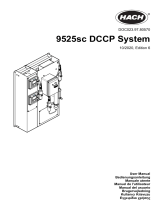 Hach 9525sc Kullanım kılavuzu
Hach 9525sc Kullanım kılavuzu
-
 Hach Polymetron 9526 Basic User Manual
Hach Polymetron 9526 Basic User Manual
-
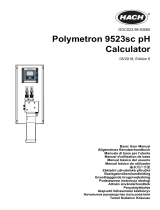 Hach Polymetron 9523sc pH Basic User Manual
Hach Polymetron 9523sc pH Basic User Manual
-
Hach SP-510 Basic User Manual
-
Hach SC4200c User Instructions
-
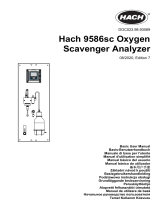 Hach 9586sc Basic User Manual
Hach 9586sc Basic User Manual
-
Hach CL17sc Kullanım kılavuzu
-
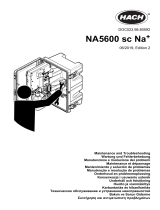 Hach NA5600 sc Na+ Maintenance And Troubleshooting Manual
Hach NA5600 sc Na+ Maintenance And Troubleshooting Manual
-
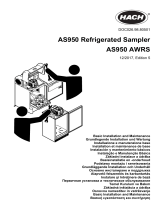 Hach AS950 Basic Installation And Maintenance
Hach AS950 Basic Installation And Maintenance
-
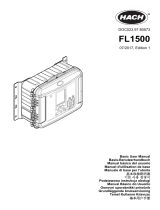 Hach FL1500 Basic User Manual
Hach FL1500 Basic User Manual















































































































































































































































































































